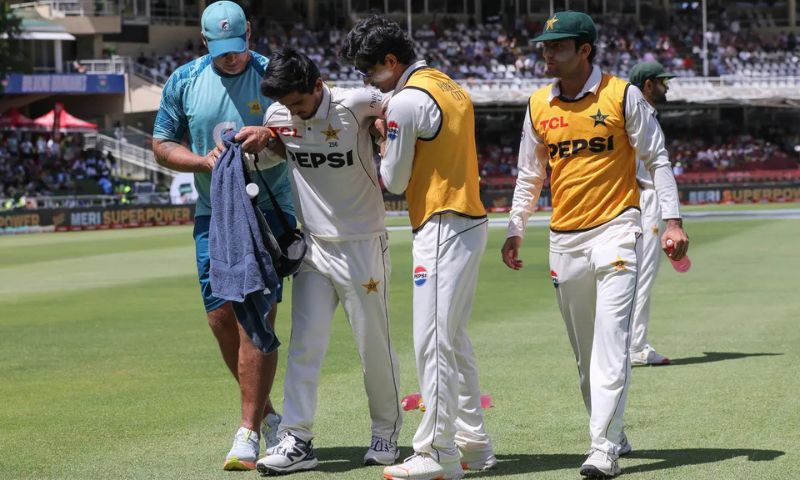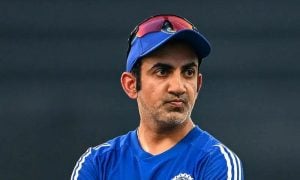Key Points
- Pakistan gears up for a packed international season
- Persistent fitness and injury woes have raised alarms about player readiness
- Fitness experts warn that in modern cricket, fitness is no longer optional but essential
- Main factors behind injuries: over-scheduling, poor dietary habits, weak rehabilitation systems
ISLAMABAD: As Pakistan prepares for a busy international season with a Tri-Nation T20I series against Afghanistan and UAE (Aug 29–Sep 7), followed by the Asia Cup (Sep 9–27) in the United Arab Emirates (UAE) and the T20 World Cup (Feb–Mar 2026) in India and Sri Lanka, the recurring fitness and injury issues plaguing its cricketers have once again sparked serious concerns.
Speaking to WE News English, Islamabad-based fitness expert and instructor Ayeza Zardad remarked that in today’s high-octane world of cricket, fitness is no longer a bonus; it is the backbone. “In a game where a split-second can crown a hero or cost a match, supreme athleticism is now the currency of success,” she said. Yet despite Pakistan’s deep reservoir of raw talent, the national side remains plagued by injuries—a recurring hurdle that continues to shatter momentum and cloud consistency. So, what is causing this troubling pattern among Pakistani cricketers?
She pointed out that the relentless rise of franchise cricket, sprouting like mushrooms after the rain, has left cricketers worn thin, both physically and mentally. Amid this whirlwind of matches, Pakistan’s cricketing ecosystem is still grappling with deeper-rooted issues: a glaring absence of a strong fitness culture, subpar injury management and rehabilitation protocols, and unhealthy dietary habits that weigh down potential.
Compounding these problems, she continued, is the lack of high-quality domestic infrastructure, leaving many players ill-equipped before they even break into the national side. Adding another layer of complexity is the communication gap between foreign fitness experts and local players—a barrier that often dilutes the impact of world-class training. “In such cases,” she emphasized, “it’s crucial for the PCB to employ interpreters and communication specialists to bridge this gap—and if none are available, it’s time the board invests in them.”
The root causes
Unlike top cricketing nations that follow centralised year-round training and fitness programmes, Pakistan still relies heavily on ad-hoc training camps and traditional coaching methods. Players may show improved fitness during a short-term camp—such as those held with military instructors in 2007 and 2016—but often revert to old routines once back in their domestic environments.
Inadequate injury management
Recurring injuries among players suggest ineffective recovery protocols. Once injured, players are either rushed back too soon or do not undergo full rehabilitation, resulting in chronic issues and long spells on the sidelines. There is a gap in long-term monitoring by the PCB’s medical and performance staff.
Poor dietary habits
Fitness begins in the kitchen, and that is where the cracks start. Several reports and expert opinions point to Pakistani players consuming excessive red meat and oily foods, which contribute to sluggishness, poor recovery, and weight gain. Unlike structured diets followed by international cricketers, dietary discipline in Pakistan cricket remains inconsistent.
Insufficient domestic infrastructure
Pakistan’s domestic circuit lacks cutting-edge fitness and recovery facilities. Players outside the national setup do not have access to elite gyms, physiotherapists, or sports science experts. Without a nationwide fitness programme, domestic cricketers enter the national side already behind in physical conditioning.
Lacking strong fitness culture
Fitness is not yet embedded in Pakistan’s cricketing DNA. While some individuals—such as Babar Azam and Shaheen Afridi, prioritise conditioning, the broader system does not reward or enforce fitness as a non-negotiable criterion. Former captain Wasim Akram has been vocal about the need for regular fitness testing and a culture shift.
Over-scheduling driven by leagues
With players involved in international fixtures, PSL, and foreign leagues, their calendars are packed. The motivation is often financial, but the toll is physical. Without proper rest and rotation policies, fatigue accumulates and injuries become inevitable.
The cost of poor fitness
Inconsistent Performances: Fatigued players are more likely to underperform under pressure.
Injury-Led Absences: Star players missing key series leaves the team exposed and disrupts squad balance.
Wasted Investment: The PCB spends heavily on salaries, bonuses, and injury treatments, only to find key players unavailable when needed most.
Road to recovery
The PCB must adopt a long-term fitness roadmap for all contracted players and those in domestic circuits. Yearly targets, quarterly assessments, and mandatory fitness clearances should be implemented—not just ahead of major tours.
Decentralised high-performance centres
There is a dire need to establish regional performance hubs equipped with modern gyms, sports science labs, and recovery rooms to ensure all players, not just national stars, get access to elite fitness facilities.
In addition, appointment of certified nutritionists for all national and domestic squads is also a must. Meal plans tailored to individual body types and workloads should be made compulsory and monitored.
Fitness-linked contracts
Fitness metrics (such as Yo-Yo test results, body fat percentage, and injury records) a part of central and domestic contract evaluations, should be ensured. If players know their fitness impacts their financial security, priorities will shift.
Load management policy
For limiting participation in back-to-back leagues and series, rotation policies and rest windows to protect fast bowlers and all-format players from burnout must be introduced.
Accountability of medical staff
The PCB’s medical panel must be more proactive and transparent. If a player gets reinjured soon after returning, the board must investigate both the rehabilitation process and the clearance protocols.
Cricket in Pakistan is more than just a sport—it is a national passion. But passion alone cannot win titles. Fitness is no longer optional in modern cricket; it is fundamental. As the team builds towards the T20 World Cup 2026, it must not only sharpen skills but also build bodies resilient enough to sustain the pressure of international cricket.
Because talent wins you matches, but fitness wins you tournaments.



























